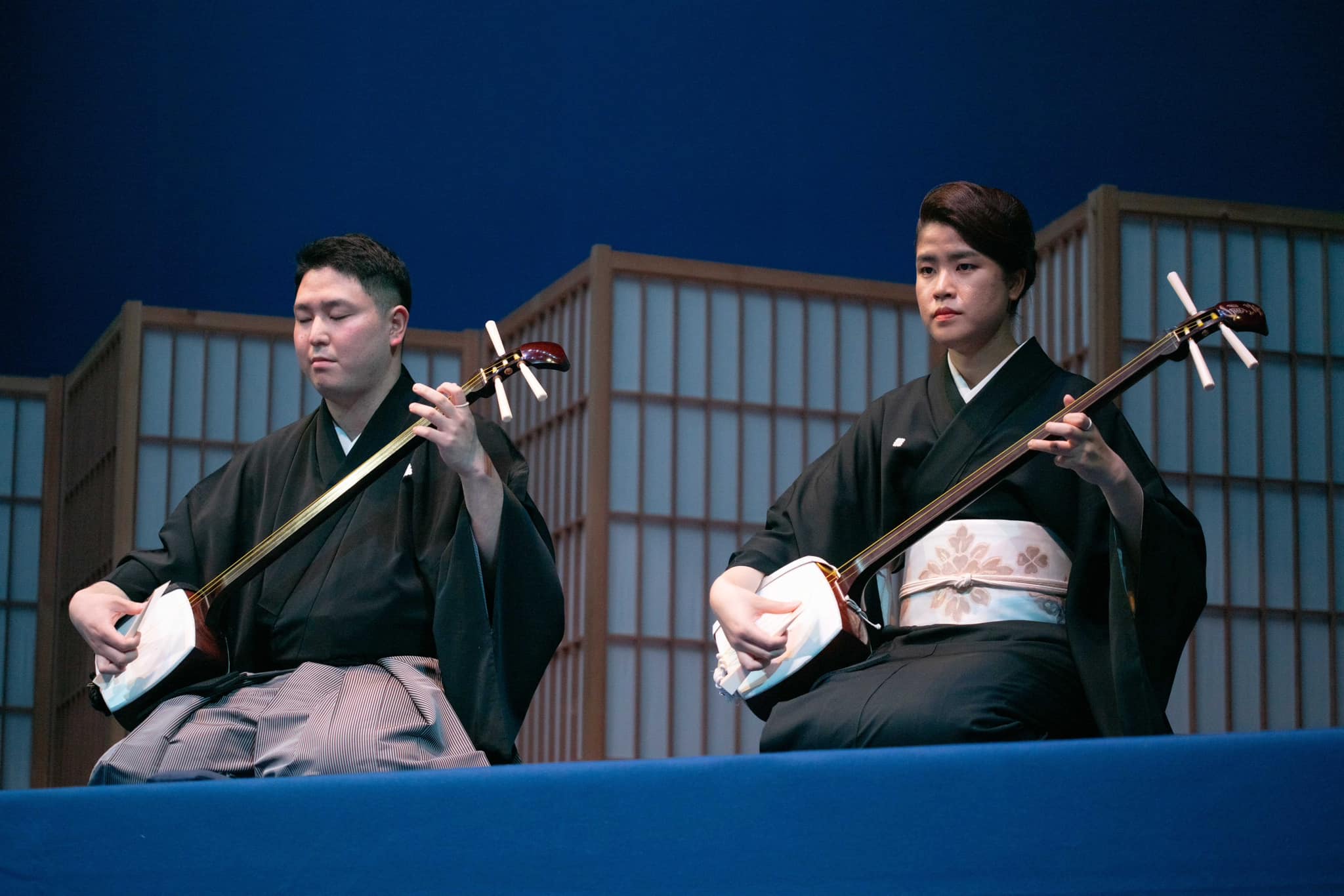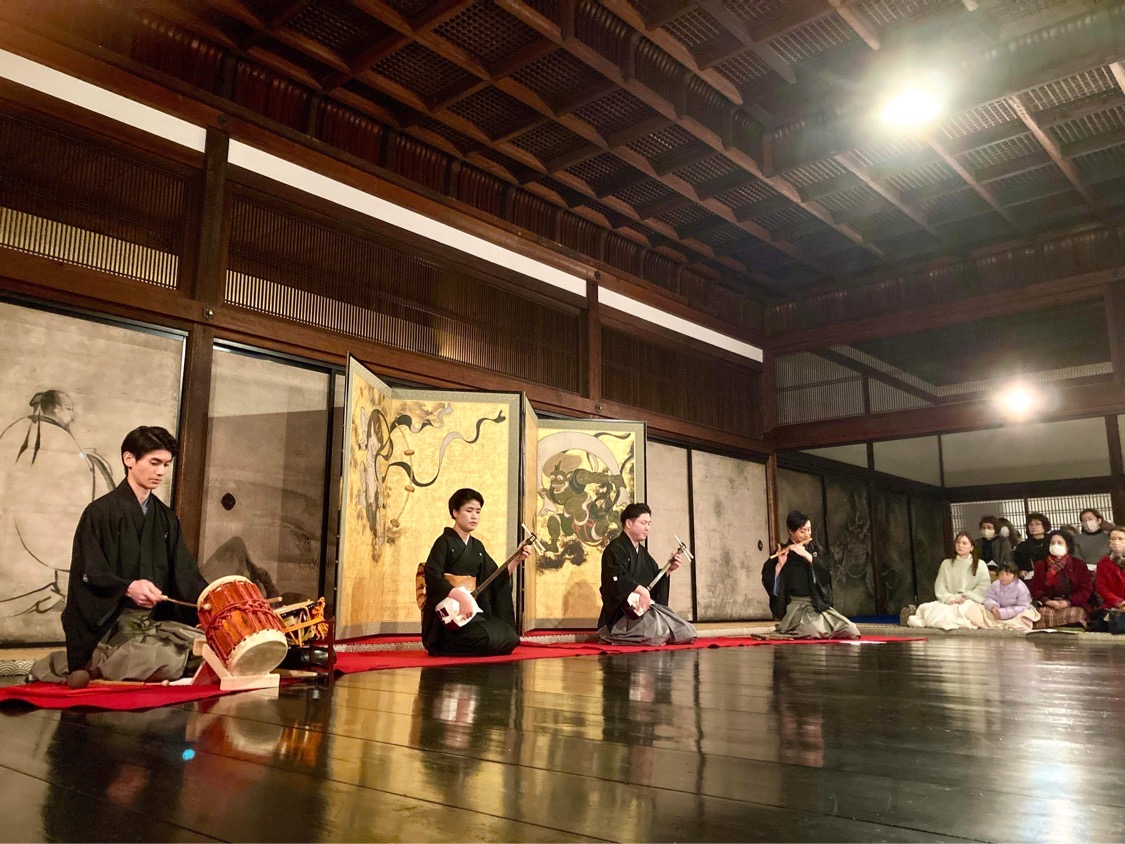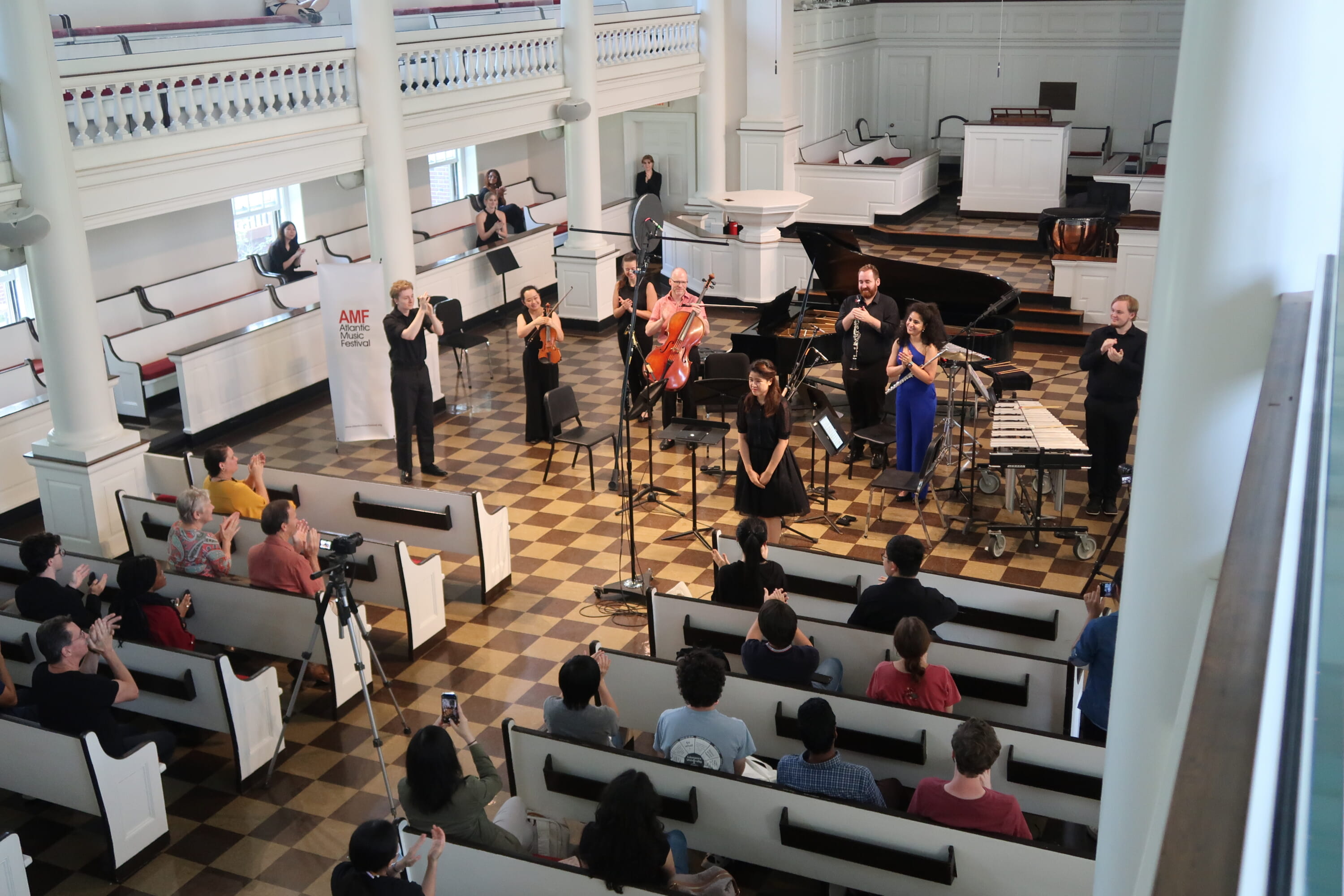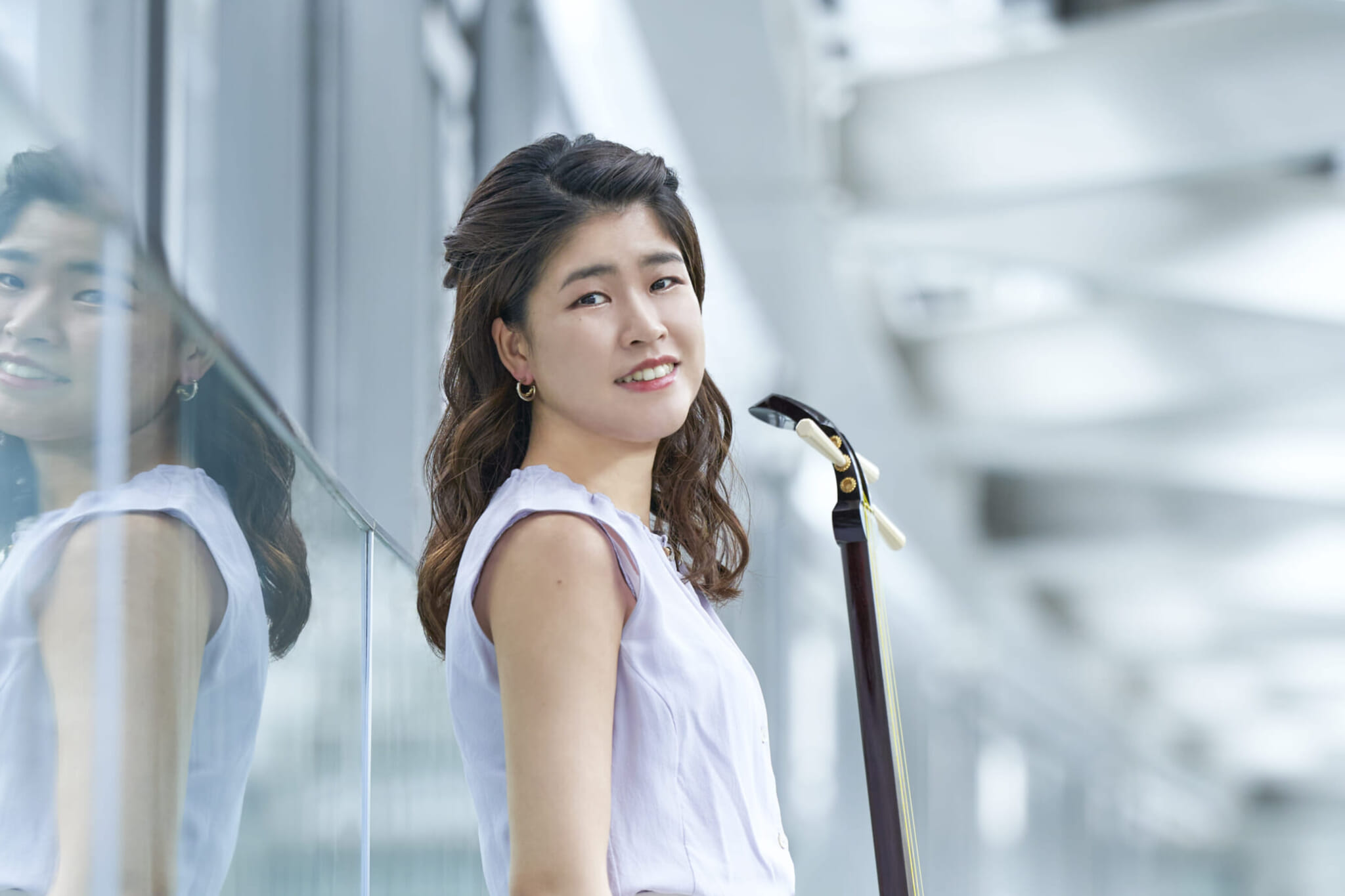Amane Sakaguchi, the ninth generation in a long line of shamisen players, performs under the stage name Kosaburo Kineya, though she will eventually inherit the family stage name of Katsusaburo Kineya, reserved for the head of the Kinekatsu-kai school of shamisen. She composed music for traditional dance at the opening ceremony of Culture City of East Asia 2020 in Kitakyushu and music for the NHK taiga drama Do Suru, Ieyasu? (What Will You Do, Ieyasu?), among other stellar works. Sakaguchi has achieved a lot for a 25-year-old. However, there are many hurdles in the world of traditional Japanese performance arts in front of her. We talked to her to gain some insight into this scene.

Amane Sakaguchi Interview
When did you first become interested in shamisen?
There was always somebody playing traditional music at home. So I would say that environment got me interested in it. It feels like I’ve been listening to nagauta music as far as I can remember, and I got my first shamisen lesson when I was 6 years old. My father, my grandfather and my father’s cousin were my teachers back then, so it’s a whole family thing.
What have been the advantages or disadvantages of being the daughter of a prestigious family of shamisen players?
As for advantages, I had a very good environment to learn shamisen. I always had a private teacher at home, a lesson room where I could practice at home, and a choice of shamisen instruments. I also might have more performance opportunities than other people.
There are disadvantages too, like the pressure of being the successor of Iemoto, the head of the school.
Are you the first female shamisen player in your family set to inherit the Kineya name?
No, eight people have succeeded the name “Katsusaburo Kineya,” and three of them were women. I’ll be the fourth.
To this day, women are not allowed to perform on the Kabuki theater stage. How does that affect music performers and other supporting professionals?
On the one hand, it’s detrimental to gender equality, while on the other, it is said that this has created the characteristics of kabuki, for example, a unique voice or movement which comes from male actors playing female roles. It’s very hard to say what’s the best way.
However, musicians, especially shamisen players, have nothing to do with the gender roles of the actors, so I think it’s unfortunate that only male musicians could perform in Kabuki.
What professional paths are there left for female shamisen players?
Let me explain the roots and the history of nagauta first. Nagauta was originally an accompaniment music for Kabuki or traditional Japanese dance performances. People in the 19th century thought that the music itself was fascinating and worth listening to, so nagauta music became independent from Kabuki, and they started to have separate nagauta concerts.
This is why today we perform both for Kabuki, traditional Japanese dance performances, and for nagauta concerts. Kabuki and traditional Japanese dance performances have insisted that only male performers can play. So the main field for us, female musicians, is nagauta concerts. That’s the current situation.
Besides a few opportunities to perform at concerts, giving lessons to students is essential for female musicians to make a living, unlike male musicians who have more opportunities.
What are your hopes for the future of shamisen music in Japan?
Nagauta used to be like pop music for ordinary Japanese people in the Edo period and its theme included teen love, commercial songs for sake, and so on. I would like to tell people today that Nagauta is not ‘old’ music, but something emphasizing small happy moments in our daily lives. I hope people will recognize how beautiful it is and also how familiar it should be for them.
Also, recently a few female kabuki actresses have been getting opportunities to perform on the kabuki stage — mostly daughters of important kabuki actors — which has never happened before. Therefore, I believe there’s a possibility that female musicians will be able to perform on the stage in the near future.

concert in Kenninji Temple in Kyoto
Have you performed anywhere that’s a bit unusual?
I did a street live show at Hibiya Festival, but it was during the pouring rain in the rainy season. Despite those bad conditions, the performance actually went well, and it made me think anything is possible.
I’ve played in a garden in Kagawa, too, and recently I had a concert in Kenninji Temple in Kyoto. There I performed my original work “Fujin-Raijin” in front of the very famous folding screen “Fujin-Raijin-zu Byobu” by the legendary artist Tawaraya Sotatsu.

The world premiere of Sakaguchi’s latest chamber piece “Dream Diary” at the Atlantic Music Festival (USA).
You’ve been accepted to the composition program at the Curtis Institute of Music in Philadelphia. Tell us more about this passion of yours and how you combine it with your background in shamisen?
I’ve been playing piano since I was 4 and shamisen since 6, so I would say I am like a bilingual speaker, but in Western classical music and traditional Japanese music. I have always been wondering how I can combine those two.
Then, I did my very first music composition when I was 19. It was a mandatory class at Tokyo University of the Arts. The piece was selected by the faculty for a performance outside the campus. It happened that a producer was in the audience, and she chose me to compose music for the opening ceremony of a big event, hosted by the Cultural Affairs of Japan and Kitakyushu city.
I started to get more interested in classical composition three years ago, and I started Zoom lessons with an American composer. I slowly started composing classical music incorporating a little bit of the essence of traditional Japanese music to maybe make it easier for people in foreign countries to understand the aesthetics of Japanese traditional music.
From now on, and during my stay at the Curtis Institute of Music, I would like to compose classical music, containing rhythm patterns of traditional percussion and some melodies from my great-great-great-grandfather’s works.
Learn more about Sakaguchi on her website.









